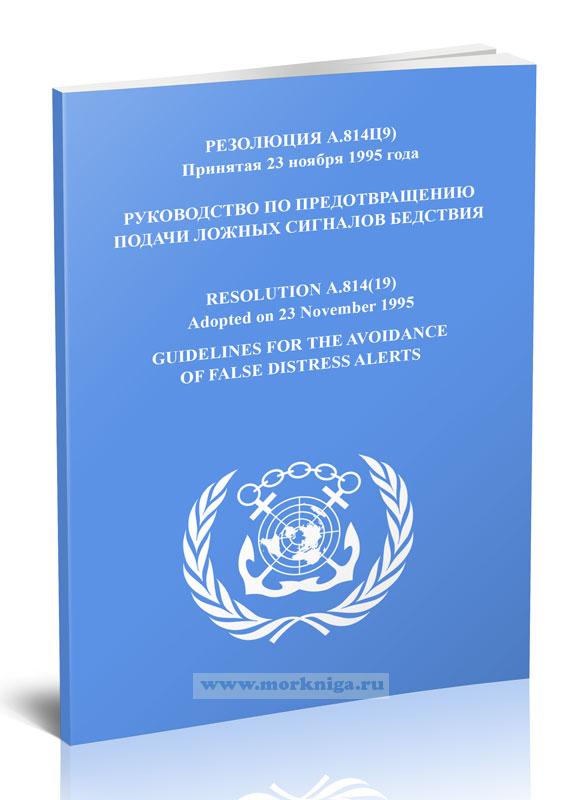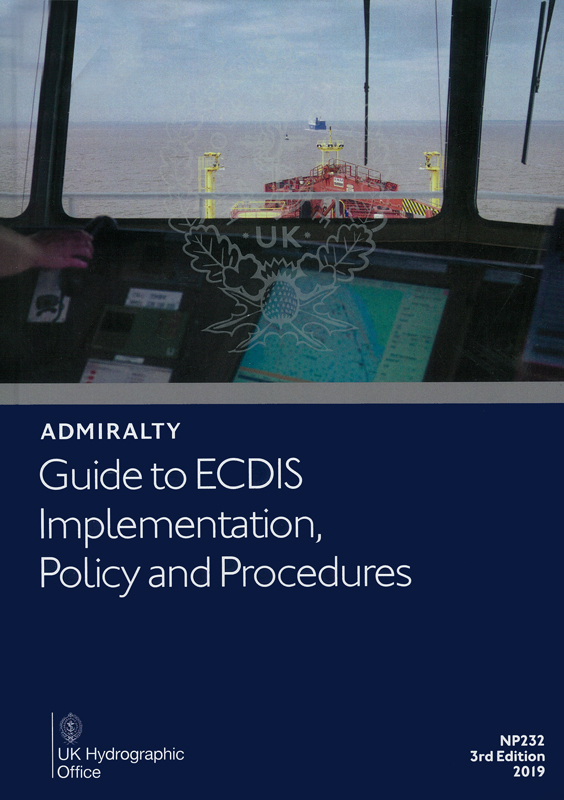Admiralty Guide to ECDIS Implementation, Policy and Procedures. NP232. 3nd edition. –†—Г–Ї–Њ–≤–Њ–і—Б—В–≤–Њ –Р–і–Љ–Є—А–∞–ї—В–µ–є—Б—В–≤–∞ –њ–Њ –≤–љ–µ–і—А–µ–љ–Є—О, –њ–Њ–ї–Є—В–Є–Ї–µ –Є –њ—А–Њ—Ж–µ–і—Г—А–∞–Љ ECDIS. NP232. 3-–µ –Є–Ј–і–∞–љ–Є–µ
–Ь—Л –љ–µ –Љ–Њ–ґ–µ–Љ –≥–∞—А–∞–љ—В–Є—А–Њ–≤–∞—В—М –µ–≥–Њ –љ–∞–ї–Є—З–Є–µ –Є –њ–Њ—Б—В—Г–њ–ї–µ–љ–Є–µ –љ–∞ –љ–∞—И —Б–Ї–ї–∞–і –њ–Њ —Г–Ї–∞–Ј–∞–љ–љ–Њ–є —Ж–µ–љ–µ
-
 –¶–Є—А–Ї—Г–ї—П—А–љ–Њ–µ –њ–Є—Б—М–Љ–Њ MSC/Circ.1179 –Э–µ–і–Њ—Б—В–∞—В–Њ—З–љ–Њ—Б—В—М –≥–Є–і—А–Њ–≥—А–∞—Д–Є—З–µ—Б–Ї–Њ–є –Є–Ј—Г—З–µ–љ–љ–Њ—Б—В–Є –Є –Љ–Њ—А—Б–Ї–Њ–≥–Њ –Ї–∞—А—В–Њ–≥—А–∞—Д–Є—А–Њ–≤–∞–љ–Є—П –≤ –Љ–Є—А–µ –Є –≤–ї–Є—П–љ–Є–µ —Н—В–Њ–≥–Њ –љ–∞ –±–µ–Ј–Њ–њ–∞
–¶–Є—А–Ї—Г–ї—П—А–љ–Њ–µ –њ–Є—Б—М–Љ–Њ MSC/Circ.1179 –Э–µ–і–Њ—Б—В–∞—В–Њ—З–љ–Њ—Б—В—М –≥–Є–і—А–Њ–≥—А–∞—Д–Є—З–µ—Б–Ї–Њ–є –Є–Ј—Г—З–µ–љ–љ–Њ—Б—В–Є –Є –Љ–Њ—А—Б–Ї–Њ–≥–Њ –Ї–∞—А—В–Њ–≥—А–∞—Д–Є—А–Њ–≤–∞–љ–Є—П –≤ –Љ–Є—А–µ –Є –≤–ї–Є—П–љ–Є–µ —Н—В–Њ–≥–Њ –љ–∞ –±–µ–Ј–Њ–њ–∞
-
 –†–µ–Ј–Њ–ї—О—Ж–Є—П –Р.814(19) –†—Г–Ї–Њ–≤–Њ–і—Б—В–≤–Њ –њ–Њ –њ—А–µ–і–Њ—В–≤—А–∞—Й–µ–љ–Є—О –њ–Њ–і–∞—З–Є –ї–Њ–ґ–љ—Л—Е —Б–Є–≥–љ–∞–ї–Њ–≤ –±–µ–і—Б—В–≤–Є—П
–†–µ–Ј–Њ–ї—О—Ж–Є—П –Р.814(19) –†—Г–Ї–Њ–≤–Њ–і—Б—В–≤–Њ –њ–Њ –њ—А–µ–і–Њ—В–≤—А–∞—Й–µ–љ–Є—О –њ–Њ–і–∞—З–Є –ї–Њ–ґ–љ—Л—Е —Б–Є–≥–љ–∞–ї–Њ–≤ –±–µ–і—Б—В–≤–Є—П
-
 VTS Manual, Edition 6
VTS Manual, Edition 6
–Ш–Ј–і–∞–љ–Є–µ –љ–∞ –∞–љ–≥–ї–Є–є—Б–Ї–Њ–Љ —П–Ј—Л–Ї–µ
NP232 offers clear guidance to support the implementation of ECDIS on board and in operating procedures, helping fleets to adopt ECDIS efficiently and aid compliance.
Produced by the UKHO in conjunction with other maritime professionals, this guide aims to further enable the safe use of ECDIS for primary navigation and give users the knowledge needed to operate confidently using ECDIS.
The publication offers:
Important information about ECDIS implementation, helping fleets to adopt ECDIS efficiently Guidance on ECDIS procedures, which can be used to assist crews and fleet managers with ISM code compliance
Assistance with planning the transition to ECDIS, ensuring that implementation is fit for purpose
This publication is the latest in a series of three to support the transition to ECDIS, which include the ADMIRALTY Guide to ENC Symbols used in ECDIS (NP5012) and the ADMIRALTY Guide to the Practical use of ENCs (NP231). Clear and comprehensive, NP5012 and NP231 help bridge crews to gain a solid understanding of practical ENC use and offer key information on ECDIS procedures.
Contents
Part 1 -The Transition to ECDIS
Introduction
About this Guide
The International Safety Management Code and the Company Safety Management System
The International Safety Management Code
Safety Management System
Stage 1 - Legal Requirements
1.1 Introduction
1.2 ECDIS and Vessel Type
1.3 ECDIS and flag State
1.4 ECDIS Carriage and the ISM Code
1.5 Legal Requirements Check List
Stage 2 - Initial ECDIS Risk Assessment
2.1 Introduction
2.2 Use of a Risk Assessment
2.3 Step 1 - Identifying the Hazard
2.4 Step 2 - Assessing the Risks
2.5 Step 3 - Deciding Whether the Risks are Acceptable
2.6 Step 4 - Implementing Control Measures
2.7 Step 5 - Reviewing and Updating the Risk Assessment
2.8 Management of Change
2.9 Initial Risk Assessment Check List
Stage 3 -Training and Familiarisation
3.1 Introduction
3.2 ISM Training/Familiarisation Requirements
3.3 STCW Requirements
3.4 Generic Training
3.5 Training
3.6 Other Training Issues
3.7 Selected Guidance
3.8 Training and Familiarisation Check List
Stage 4 - Procurement, Installation and Onboard Maintenance
4.1 Introduction
4.2 ISM Requirements
4.3 SOLAS Requirements
4.4 Complying with Rules and Regulations for Installation
4.5 IHO ECDIS Standards
4.6 Software Maintenance
4.7 Procurement, Installation and Onboard Maintenance Check List
Stage 5 - Policy and Procedures
5.1 Introduction
5.2 Procedures
5.3 Required Policy and Procedures
5.4 Guidelines for Development of Procedures
5.5 Policy and Procedures Check List
Stage 8 - Chart Data Considerations
6.1 Introduction
6.2 Chart Data and the ISM Code
6.3 Chart Coverage
6.4 ADMIRALTY Vector Chart Service (AVCS)
6.5 ADMIRALTY Information Overlay (AIO)
6.6 ADMIRALTY Raster Chart Service (ARCS)
6.7 Maintaining Chart Data
6.8 Quality Assurance of ENCs
6.9 Chart Management Tools
6.10 Other Considerations
6.11 Chart Data Check List
Stage 7 -Individual Vessel Risk Assessment
7.1 Introduction
7.2 Step 1 - Identifying the Hazard
7.3 Failure Mode and Effects Analysis
7.4 Step 2 - Assessing the Associated Risks
7.5 Step 3 - Deciding Whether the Risks are Acceptable?
7.6 Step 4 - Implementing Risk Control Measures
7.7 Step 5 - Reviewing and Updating the Risk Assessment Periodically
7.8 Individual Vessel ECDIS Risk Assessment Check List
Stage 8 -Transition Stage
8.1 Introduction
8.2 Transition Period.
8.3 ISM Requirements
8.4 Transition Stage Check List
Stage 9 - Onboard implementation
9.1 Introduction
9.2 ISM Requirements
9.3 The ECDIS Mindset
9.4 Onboard Implementation Check List
Part 2 - Bridge Organisation
10.1 Introduction
10.2 Bridge Resource Management
10.3 Managing Situational Awareness with ECDIS
10.4 Policy to Promote Situational Awareness
10.5 Establishing Key Decision-Making Processes in an ECDIS Environment
10.6 Bridge Ergonomics
10.7 ECDIS Backup
10.8 Familiarisation with Onboard ECDIS
10.9 Monitoring the Operational Status of ECDIS
10.10 Managing Over-Reliance on ECDIS
10.11 Development of Procedures and Standing Orders
10.12 MasterвАЩs Standing Orders
10.13 The Bridge Order Book
10.14 Communication and Terminology
10.15 Conclusions
Voyage Planning -Appraisal
11.1 Introduction
11.2 Appraisal
11.3 Selecting the Appropriate ENCs for a Voyage
11.4 Maintenance of a Digital Chart Outfit
11.5 ENC Ordering and Updating
11.6 Temporary & Preliminary (T&P) NMs
11.7 ADMIRALTY Information Overlay (AIO)
11.8 ENC Preliminary Notices (EPNMs)
11.9 Navigation Warnings
11.10 Supplementary Safety-Related Information
11.11 Understanding the Limits of ENC Accuracy
11.12 Use of Software to Aid Planning and Appraisal
11.13 Checking and Assurance
Voyage Planning - Planning
12.1 Introduction
12.2 The Voyage Plan
12.3 Vessel Settings
12.4 Vessel Draught and Under Keel Clearance
12.5 Air Draught/Masthead Clearance
12.6 Incorporation of Turn Radius and Wheelover Points
12.7 ENC Features and Date/Time
12.8 Leg Characteristics
12.9 Tidal Correction
12.10 MarinerвАЩs Notes
12.11 Look-Ahead and Alarms
12.12 ECDIS Safety Parameters
12.13 Navigating Across the Safety Contour
12.14 Setting the Guard Zone
12.15 Display Settings - Modes
12.16 ECDIS Display - Colour Palettes
12.17 ECDIS Display Orientation
12.18 Display Scale and Scale Minimum
12.19 Use of Pick Reports in Planning
12.20 Adding Detail to the Route
12.21 Finalising the Voyage Plan
12.22 Planning and Pilotage
12.23 Pre-Pilotage Information Exchange with Pilot
Voyage Planning - Review
13.1 Checking and Approval
13.2 Voyage Plan - Output
13.3 Changes to Voyage Plans
Responsibilities of the Officer of the Watch
14.1 Overview
14.2 Assuming the Watch
14.3 Maintaining a Look Out
14.3.1 General Surveillance
14.4 ECDIS and Collision Avoidance
14.5 Recording Bridge Activities
14.6 Checking Navigational Equipment Operation
14.7 Navigation and Monitoring with ECDIS
14.7.1 General Principles
14.7.2 Monitoring the Voyage
14.8 Monitoring with a Pilot Onboard
14.9 ECDIS and the use of Portable Pilot Units
Maintenance of ECDSS
15.1 Introduction
15.2 The Need for Maintenance
15.2.1 Operating System Issues
15.2.2 Software Application Issues
15.2.3 ECDIS and ENC Interaction Issues
15.2.4 ECDIS Annual Inspection Test
15.2.5 ECDIS Failure Drills
Cyber Security
16.1 Introduction
16.2 Malware
16.3 Software Virus
16.4 Worms
16.5 Trojan Horse
16.6 Spyware
16.7 Ransomware
16.8 Social Engineering
16.9 Phishing
16.10 Spear Phishing
16.11 Data Breaches
16.12 Insider Threat
16.13 Common Shipping Cyber Security Vulnerabilities
16.14 Legal
16.15 Cyber Risk Management
16.16 Crew Cyber Security Training
16.17 Practical Tips for Crew
Annex 1 - Example Hazard Descriptions
17.1 Introduction
17.2 Hazard Examples
Annex 2 - IMO MSC. 1/Circ.1503/Rev. 1 16 June 2017
Annex 3 - References
Certificate of Authenticity



